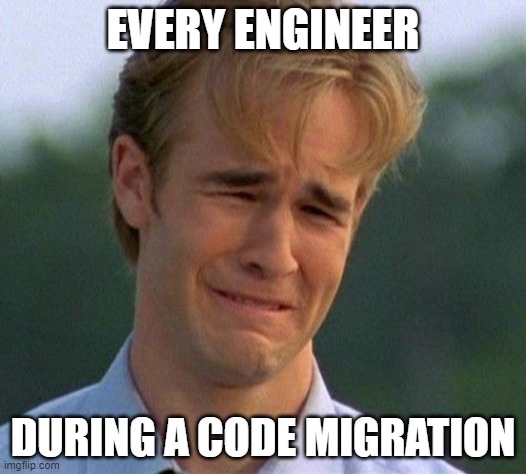Why Your Code Migration Failed: Lessons from a Decade of Disasters
by DeeDee Walsh, on Apr 7, 2024 12:30:00 AM
Code migrations, the bane of every developer's existence. Over the past 12 years, I've witnessed countless migrations gone wrong, leaving teams frustrated, deadlines missed, and codebases in distress. In this post, I'll share the pitfalls that led to these failures, so you can avoid them in your own migration nightmares.

Mistake 1: Diving in Head First
The biggest mistake teams make is rushing into a migration without proper planning. They assume it's just a matter of copy-pasting code from one platform to another. Wrong! Without a clear understanding of the target architecture and how it differs from the current one, you're setting yourself up for disaster.
Mistake 2: Hoarder's Syndrome
Just like that drawer full of old cables you're afraid to throw away, developers often cling to every line of code during a migration. They fail to assess what's truly necessary and what can be discarded. This leads to bloated, inefficient code in the new environment.
Mistake 3: The Big Bang Theory
Some teams opt for the "big bang" approach, attempting to migrate everything at once. This is like trying to move your entire house in one trip - it's messy, stressful, and prone to failure. Staged migrations, while they take longer, allow for more control and less risk.
Mistake 4: Spaghetti Code Syndrome
Migrating code that's poorly documented, tightly coupled, and full of spaghetti logic is a recipe for disaster. Without clean, modular code, the migration process becomes a tangled mess that's hard to unravel.
Mistake 5: "It Works on My Machine"
Just because the migrated code runs on the developer's machine doesn't mean it's ready for prime time. Skimping on thorough testing across different environments and scenarios is a guaranteed way to introduce bugs and performance issues.
Mistake 6: Set It and Forget It
The job isn't done once the migrated code is live. Failing to monitor the application closely post-migration is like leaving your new house unlocked - you're inviting trouble. Issues can and will arise, and teams need to be ready to address them promptly.
Mistake 7: Missing the Opportunity
Migration is not just about moving code; it's a chance to improve and evolve your application. Teams that fail to take advantage of new features, performance enhancements, or scalability improvements offered by the new environment are missing out on the true benefits of migration.
Code migration is a challenging but necessary part of a software's lifecycle. By avoiding these common pitfalls - lack of planning, clinging to old code, attempting too much at once, migrating messy code, insufficient testing, neglecting post-migration monitoring, and failing to capitalize on improvements - you can increase your chances of a successful migration.
Remember, there's no one-size-fits-all approach to code migration. Each project is unique, with its own complexities and challenges. The key is to stay adaptable, learn from others' mistakes (and your own!), and never underestimate the importance of thorough planning and testing.
Alright, before you dive headfirst into your next code migration, hear me out. These are some hard-earned lessons from the trenches. By following these tips and keeping a clear head, you can take what could be a total nightmare and turn it into a smooth move that sets your app up for greatness down the road.
Shameless promotion: code migration is a learned skill and we have migration engineers that have been doing it for decades. Reach out if you need help.

